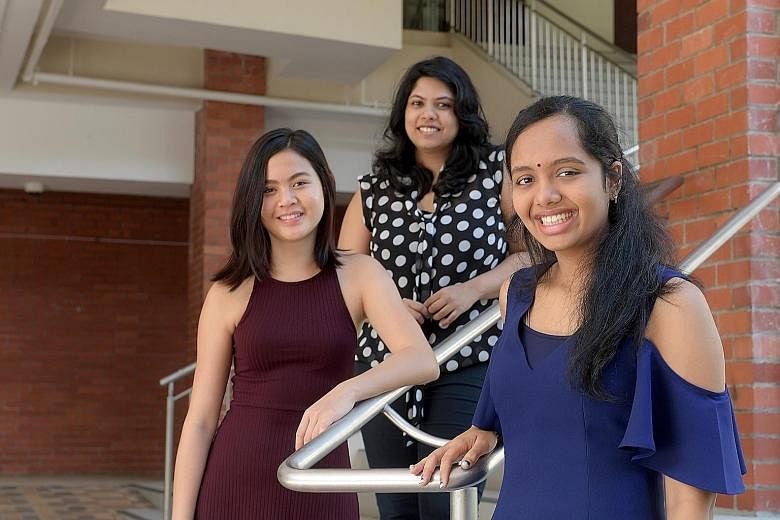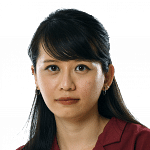A group of students from the Singapore American School (SAS) have become the first in Singapore to have a science experiment installed on the International Space Station (ISS).
Their experiment, which aims to find out the effects of melanin on bacteria growth in space, was successfully carried to space on the Dragon spacecraft on June 4 via American company SpaceX's Falcon 9 rocket at the Kennedy Space Centre in Florida in the United States. The spacecraft arrived at the ISS last Monday, Singapore time, where the experiment will run for a month.
SAS student Sunita Srivatsan, 17, had approached the school in March last year for support on the project after attending a talk by former National Aeronautics and Space Administration (Nasa) scientist Bidushi Bhattacharya, who also runs education programmes through her start-up, Bhattacharya Space Enterprises (BSE).
"Going to space is a very common aspiration for kids. I heard from some teachers that Dr Bhattacharya had access to ISS labs, and it sounded very interesting when she spoke more about space technology research."
Since then, she has been researching and planning the experiment with five other students - Jaclyn Chan, 17; Keshav Jagannath, 17; Annie Kim, 17 ; Madeline Smith, 16; and Devansh Tandon, 16. The experiment, which contains two bacteria samples, is plugged into a circuit board placed in a 5cm by 10cm container, which was shipped to the US in March before the rocket launch.
The project comes under the Quest-ISS programme. Only about a dozen school experiments are sent to the ISS every year via this programme, mostly projects from schools in the US.
The $55,000 cost of the SAS project, which includes mechanical and biological materials for the experiment and transport on the rocket, was sponsored by the SAS Foundation.
While the SAS students had mentors from their school and the BSE, they came up with ideas for the research themselves by consulting online journals on microgravity research as well as relevant Nasa websites. Microgravity is the condition in which people or objects appear to be weightless, due to weak gravity in space. Findings from the experiment could make it easier to grow plants in space.
Ms Priyadarshini Majumdar, 24, a BSE astropreneur and engineer who is one of the students' mentors, said that organisms growing in space will have greater exposure to radiation.
The students have implanted melanin genes in E. coli bacteria, which offer protection against the radiation, and also set up a control. If the hypothesis that melanin can aid the growth of bacteria in space is proven true, scientists may be able to genetically modify plants to produce more melanin, which could make it easier to grow plants in space.
Throughout the experiment period, astronauts will download data and photos from the experiment a few times every week. Measurements such as of the temperature and humidity will be taken, and photos can also indicate how well the bacteria samples are growing.
Given that the students have no access to the experiment, they also had to program functions that allow it to run automatically, such as coding commands that determine the amount of nutrients funnelled to the bacteria every day, as well as how often this is done.
Sunita, who is graduating from SAS this year, said the biggest challenge came from the fact that they were dealing with an unknown entity. "We've never seen any of these processes happening in space. It's quite abstract so we couldn't get a feel of the constraints or what may be possible."
Putting the experiment together thus required meticulous planning. For example, when nutrients for the bacteria were sealed in a package, the students had to make sure that pressure differences in space are accounted for.
The students hope to be able to further observe the results of their experiment up close when it returns in a month's time, and compile the results into a research paper.
But they are also bracing themselves for unexpected events - there is a 14 per cent chance that the launched rocket may fail to return, which means they can rely only on the data collected during the experiment.
In a few months, SAS will start on another space experiment to be launched next year. Dr Bhattacharya said she hopes to bring space research to more students here, particularly Singaporeans. "Exposing students to space research at a young age can help Singapore to build up a space-tech ecosystem."


